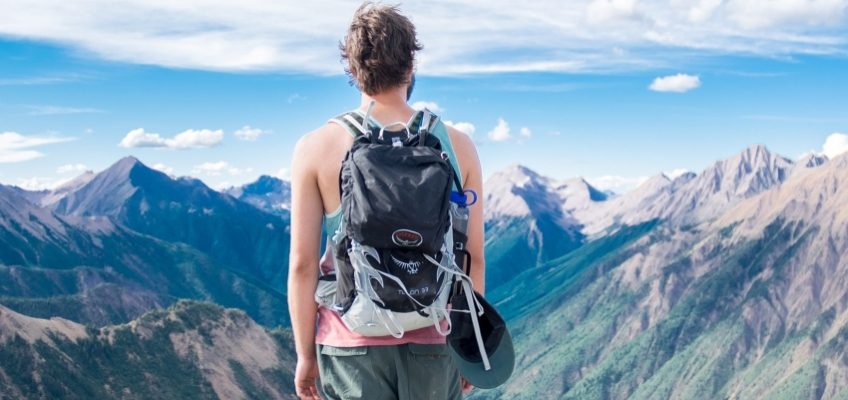If you’re an experienced hiker or trekker, you will probably already know what altitude sickness is and may have even experienced this for yourself.
However, if you’re embarking on your first big trekking expedition, this is a very real threat and you should definitely read on.
So, what is altitude sickness?
Also known as Acute Mountain Sickness (AMS), altitude sickness happens when you ascend from a lower altitude too quickly and your body has not had sufficient time to acclimatise to the new (higher) conditions. The higher you climb; the less oxygen is in the air making you struggle to get the required amount of oxygen into your body.
Some of the main symptoms of altitude sickness are nausea, dizziness, an inability to catch your breath and fatigue.
In some cases, altitude sickness can be self-diagnosed and self-treated if symptoms are not severe. Such symptoms can last a few days and are usually harmless once your body has adjusted. However, you can end up in severe distress if you are unable to breathe properly and may experience blackouts and/or fainting.
What happens if I ignore my symptoms?
HACE
AMS can cause severe health issues if ignored or misdiagnosed. Long term exposure to altitude sickness can lead to High Altitude Cerebral Oedema (HACE). HACE is when a lack of oxygen to your brain causes your brain to swell.
The symptoms of HACE are much like those of altitude sickness so it can be hard to diagnose – you may not even realise there is something wrong until it’s too late. Symptoms include headaches, nausea/vomiting, extreme fatigue, feeling confused, loss of co-ordination and even hallucinations. If you or any of your group experience any of these, stop trekking and rest while the symptoms subside.
One of the best ways to combat HACE, if you think you are suffering from it, is to descend back down to a lower altitude. Other preventatives include, if available, bottled oxygen and dexamethasone (a steroid which prevents inflammation).
If you are unable to move and symptoms are getting worse, call for medical help immediately. HACE can be fatal if ignored and can develop very quickly over only a few hours.
HAPE
Another serious condition is High Altitude Pulmonary Oedema (HAPE). This is quite different to HACE as it is a condition where fluid builds up in your lungs.
The symptoms of HAPE include respiratory difficulties, tightness in the chest, a cough and a blue tinge to your skin (also known as cyanosis). Unlike the first few symptoms, cyanosis is quite a distinct symptom allowing you to potentially diagnose HAPE among your group and seek medical attention quickly.
Much like HACE, some preventatives include bottled oxygen and descending to a lower altitude. However, for HAPE, nifedipine is a medication you can take to help relax the muscles of your heart and blood vessels which aids in your ability to breathe more easily.
High Altitude Pulmonary Oedema can develop quickly and can be extremely dangerous if left untreated.
How to prevent Altitude Sickness
There are precautions you can take to prevent altitude sickness affecting your trip. Here are some of our top tips:
- Take medications such as Acetazolamide which aids in preventing AMS occurring.
- Pack ibuprofen for any headaches you may experience.
- Try not to climb more than 300-500 metres per day.
- Take your time – altitude sickness can really affect you from 2,500 metres (8,000 ft) onwards so travel slowly. Taking it slow helps your body adjust and prepare itself for further heights. The quicker you climb, the more likely you are to suffer AMS.
- Eat foods that give you energy such as a high carbohydrate diet and don’t overeat.
- Don’t drink alcohol.
- Drink plenty of water.
- Don’t push yourself too hard. If you experience altitude sickness, rest until you are fully recovered and then continue on.
- Avoid taking any form of sleeping tablets or similar as these medications can suppress your breathing further.
- Avoid over-exertion within the first 24 hours.
- ‘Climb high, sleep low’ – This is a straight forward saying that recommends trekkers climb during the day and then sleep at a lower altitude back down the hill during the night. This helps your body acclimatise to the altitude gradually.
Is it covered?
Each insurer will have their own guidelines when it comes to trekking and hiking.
Go Insurance covers trekking up to 4000 metres as standard provided you are trekking with a licensed commercial operator and using mapped/established routes. If you are trekking to a greater height, you will need to apply for additional cover.
If you plan to trek by yourself, you may find you are not adequately covered to do so. If you do not follow the guidelines of your chosen travel insurance provider, you may find you are accountable for all medical costs incurred to treat your altitude sickness, making your holiday a lot more expensive!
If planning a trek, confirm cover with your insurer and have them note it on your policy documentation. If you know you are going to partake in anything ‘out of the ordinary’ disclose this to your travel insurer – for example, the use of ropes or climbing equipment.
Remember: Altitude sickness does not discriminate when it comes to age, gender or physical fitness so, always bear this in mind when going on a hike – Just because you did not experience it last time, does not mean you won’t experience it this time!
Do you need a quote for your next trek?
Click here to complete the online application form and we will be in touch with you shortly!


